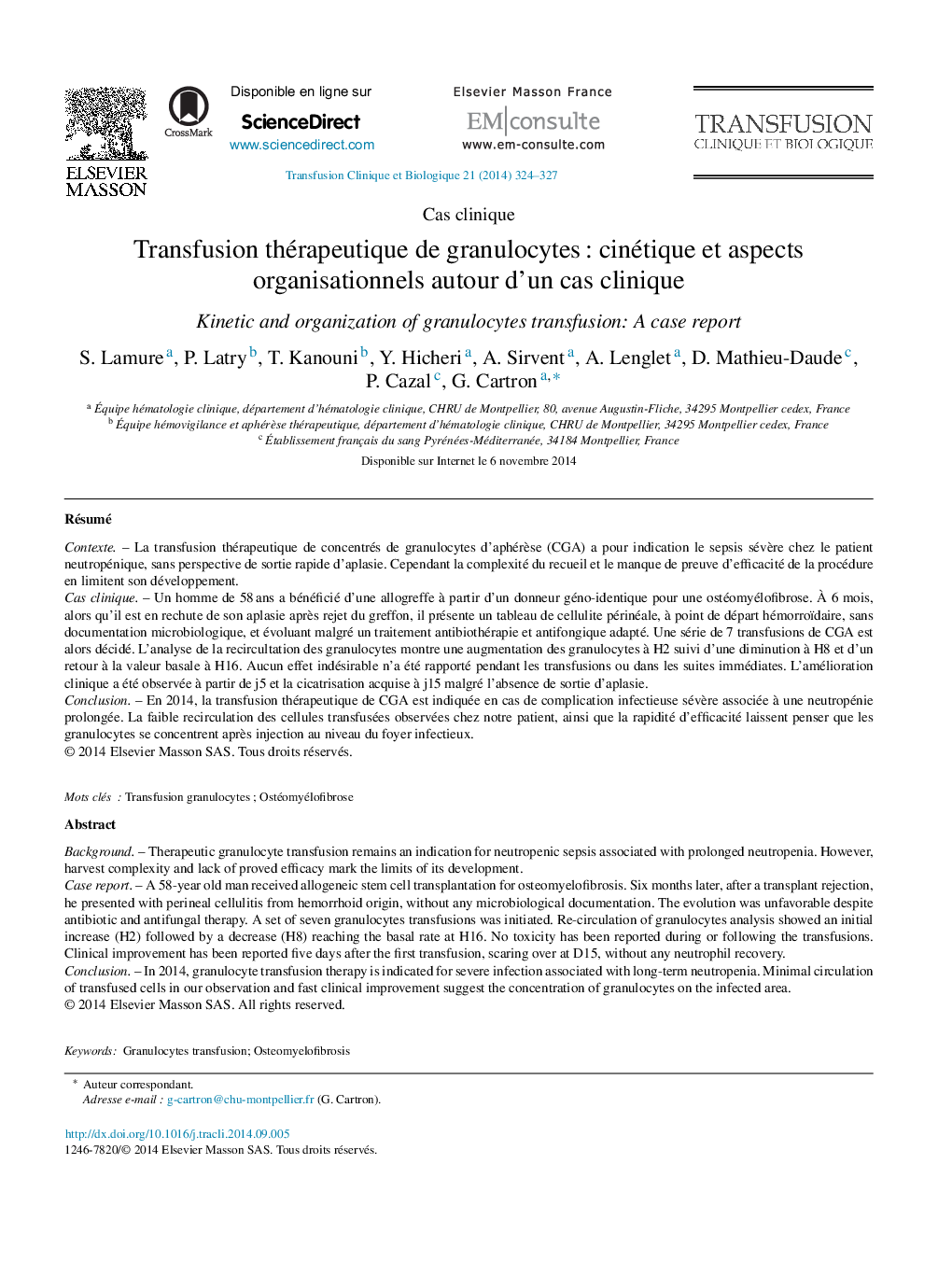| Article ID | Journal | Published Year | Pages | File Type |
|---|---|---|---|---|
| 1105135 | Transfusion Clinique et Biologique | 2014 | 4 Pages |
RésuméContexteLa transfusion thérapeutique de concentrés de granulocytes d’aphérèse (CGA) a pour indication le sepsis sévère chez le patient neutropénique, sans perspective de sortie rapide d’aplasie. Cependant la complexité du recueil et le manque de preuve d’efficacité de la procédure en limitent son développement.Cas cliniqueUn homme de 58 ans a bénéficié d’une allogreffe à partir d’un donneur géno-identique pour une ostéomyélofibrose. À 6 mois, alors qu’il est en rechute de son aplasie après rejet du greffon, il présente un tableau de cellulite périnéale, à point de départ hémorroïdaire, sans documentation microbiologique, et évoluant malgré un traitement antibiothérapie et antifongique adapté. Une série de 7 transfusions de CGA est alors décidé. L’analyse de la recircultation des granulocytes montre une augmentation des granulocytes à H2 suivi d’une diminution à H8 et d’un retour à la valeur basale à H16. Aucun effet indésirable n’a été rapporté pendant les transfusions ou dans les suites immédiates. L’amélioration clinique a été observée à partir de j5 et la cicatrisation acquise à j15 malgré l’absence de sortie d’aplasie.ConclusionEn 2014, la transfusion thérapeutique de CGA est indiquée en cas de complication infectieuse sévère associée à une neutropénie prolongée. La faible recirculation des cellules transfusées observées chez notre patient, ainsi que la rapidité d’efficacité laissent penser que les granulocytes se concentrent après injection au niveau du foyer infectieux.
BackgroundTherapeutic granulocyte transfusion remains an indication for neutropenic sepsis associated with prolonged neutropenia. However, harvest complexity and lack of proved efficacy mark the limits of its development.Case reportA 58-year old man received allogeneic stem cell transplantation for osteomyelofibrosis. Six months later, after a transplant rejection, he presented with perineal cellulitis from hemorrhoid origin, without any microbiological documentation. The evolution was unfavorable despite antibiotic and antifungal therapy. A set of seven granulocytes transfusions was initiated. Re-circulation of granulocytes analysis showed an initial increase (H2) followed by a decrease (H8) reaching the basal rate at H16. No toxicity has been reported during or following the transfusions. Clinical improvement has been reported five days after the first transfusion, scaring over at D15, without any neutrophil recovery.ConclusionIn 2014, granulocyte transfusion therapy is indicated for severe infection associated with long-term neutropenia. Minimal circulation of transfused cells in our observation and fast clinical improvement suggest the concentration of granulocytes on the infected area.
